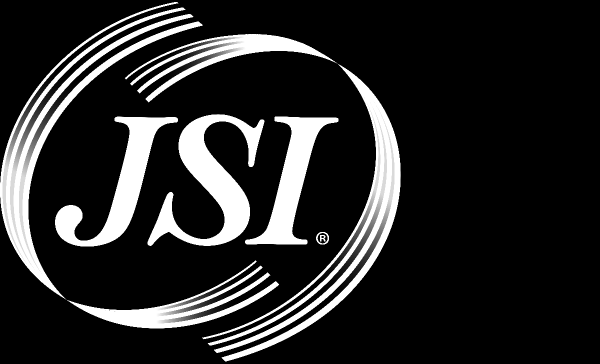
FCC Enhances its 911 Caller Location Accuracy Rules

Over the summer, the FCC updated its 911 rules to increase the location accuracy for 911 calls made using wireline, VoIP, Telecommunications Relay Service, and text-to-911 networks. This order also consolidates 911 rules, which were in 47 CFR 1.9,20, 25 and 64, into Section 9. Section 9 will include the new rules required in this order and eliminate sections that are specific to obsolete technologies.
This order provides significant additional requirements for multi-line telephone systems (MLTS) to implement the Kari’s Law Act of 2017 and requires all systems to provide functionality to improve 911 dialing and location accuracy to implement the Repack Airwaves Yielding Better Access for Users of Modern Services Act of 2018 (RAY BAUM’S Act). The requirements apply differently to various entities.
- Voice service providers are required to transmit 911 calls, including the station number, to the Public Safety Answering Points (PSAPs). Voice providers that rely on customers to determine the routing of the 911 calls have no further responsibility.
- MLTS manufacturers, sellers, installers, managers, lessors, and importers must ensure systems installed after February 16, 2020, meet the following:
- Default equipment routing is pre-configured to allow 911 calling;
- Does not require the customer to dial additional digits to reach a 911 PSAP, such as “9”;
- Sends a notification to a centralized MLTS location at the same time the 911 call is initiated.
- In addition, the installer or MLTS system manager must configure the system to convey the dispatchable locations of the caller to the PSAP:
- No later than one year after the effective date of the order for on-premises fixed locations;
- No later than two years after the effective date for non-fixed devices and off-premises devices associated with the MLTS system.
Note, companies that provide hosted PBX, Centrex, or IP PBX would be considered installers or managers of the systems they sell or lease and could be liable for errors in routing of the calls or provision of call location information.
Enhanced Location Accuracy Rules
In 2014, the FCC enhanced the location accuracy rules for Commercial Mobile Radio Service (CMRS) providers to include the building floor where the caller is located. The FCC is striving to have automatic real-time dispatchable locations be generated for all 911 calls. However, this is not yet feasible in all cases, so carriers can generally fall back to Registered Locations and manual updates. In this latest order, the FCC enhances the location accuracy for other technologies:
VoIP Providers:
FCC reaffirmed that VoIP service providers continue to have obligations to educate customers on the limitations of VoIP 911 and must provide stickers for phones or include an on-screen notice to notify customers. The rules apply to all VoIP services, including outbound-only VoIP. The dispatchable location rules depend on the type of VoIP being provided:
- Fixed VoIP service providers must automatically transmit dispatchable locations with every 911 call unless it is not technically feasible or is cost prohibitive, in which case they can fall back to using the registered location option. The compliance date for fixed VoIP automatic dispatchable location data is one year after the effective date of the order.
- Non-fixed/nomadic VoIP providers have additional challenges on implementing automatic dispatchable location information. However, some nomadic VoIP services can provide additional information on the dispatchable location. The FCC allows non-fixed VoIP to provide automatic dispatchable location or a registered location when feasible and can accept alternative location information consisting of coordinate-based locations sufficient to identify the caller’s civic address and approximate in-building location including floor level. Non-fixed VoIP service providers will have two years from the date this order is approved by OMB to meet the same requirement as fixed VoIP.
TRS Providers:
IP Relay and Video Relay Service providers currently must transmit location information to the PSAP in the form of a registered location. The FCC’s new rules have enhanced this requirement:
- Internet-based TRS providers will have the flexibility to implement automatic dispatchable location and fall back to the registered location option when real-time dispatchable locations are not feasible. Internet-based TRS providers also have the option to provide alternative location information received from other sources.
- The FCC also recognized that TRS providers do not have the obligation to automatically detect when their customer premises equipment (CPE) has been moved.
- TRS providers will have two years from the order’s effective date to comply with the new rules.
Mobile Providers with Text to 911 Service:
Currently, text to 911 services are required to obtain the location information needed to properly route the text to the proper 911 PSAP, but are not required to convey call back information. With this order, text providers are required within two years to provide either:
- The dispatchable location if technically feasible;
- Manually-updated dispatchable location; or
- Enhanced location information, which may be coordinate based, consisting of the best available locations that can be obtained, including the floor level.
In summary, TDM services must be able to transmit the station location and provide automatic location information to the 911 PSAP. New MLTS installed or manufactured after February 2020 must be configured to allow 911 calls in the initial default settings and to notify the organization when a 911 call is made. Automatic location accuracy is required for both wireline and wireless, VoIP, and TRS providers. Location accuracy requirements are designed to be applied to all technologies. Generally, fixed technologies have one year to comply; nomadic technologies have two years to comply.
JSI will send another e-Lert when the order is final and specific compliance dates are available. If you have questions about any of these new 911 requirements, please contact one of our experts by clicking the button below.




